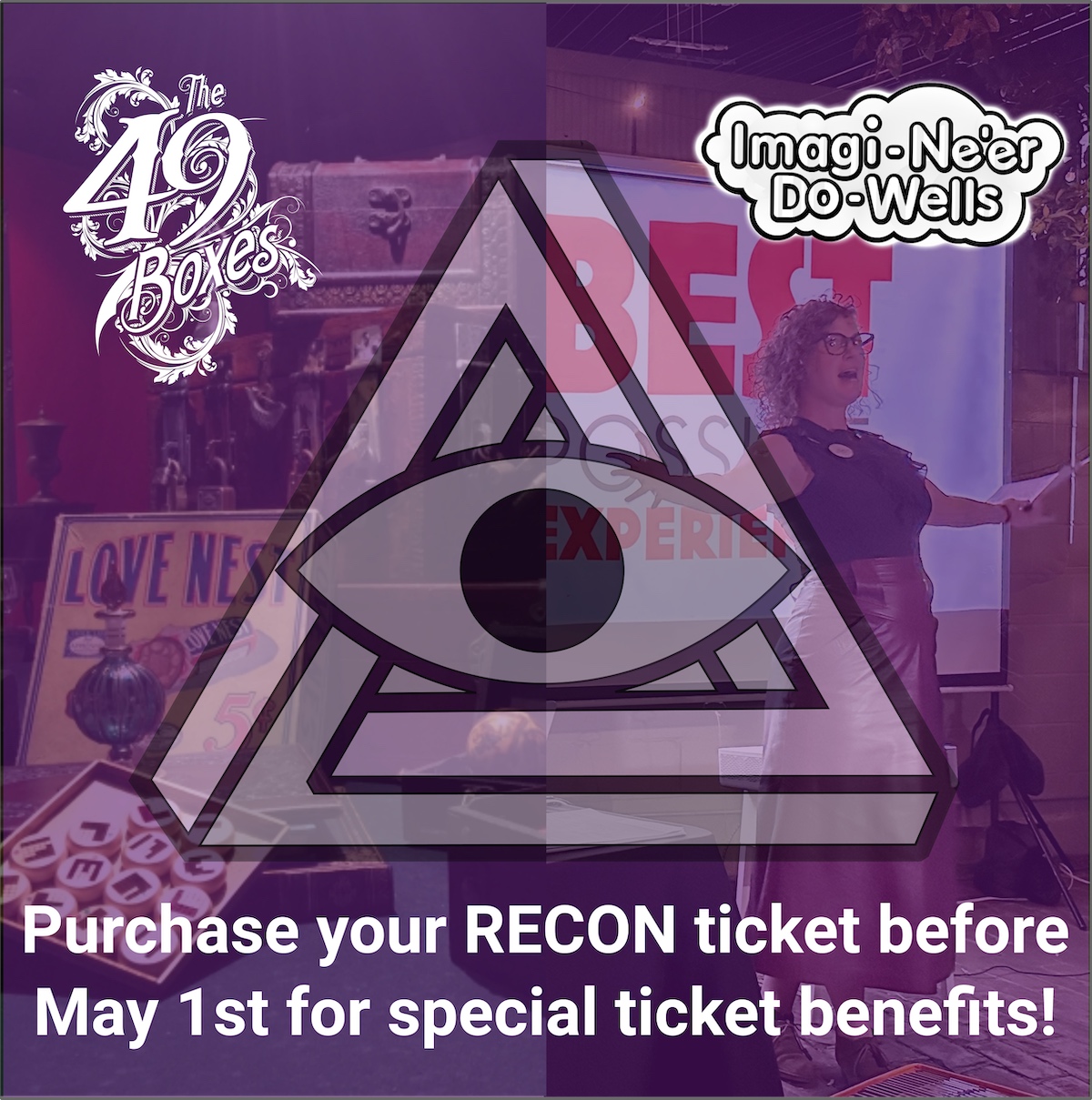Update 3/16/21: If you enjoy The Werewolf Experiment, we hope you’ll check out our interview with game and puzzle designers Juliana Moreno Patel and Ariel Rubin (The Wild Optimists) on The Reality Escape Pod.
We were skeptical, but we were proven wrong.
Location: Buy it and play it wherever you want
Date played: January 31, 2016
Team size: 2-6; we recommend 4-6
Price: $60+shipping per box, $45+shipping if you support the Kickstarter

A room escape at home
Launching on February 3, 2016 via Kickstarter, Escape Room In A Box: The Werewolf Experiment is exactly what its name states: A room escape in a box.
Their Kickstarter states:
“Escape Room In A Box is an experience as much as a game. It is all the fun of working with your friends at puzzle-solving, clue-finding, racing-against-time of an Escape Room crammed into a tiny box of DOOM! (But only if you don’t escape, if you do escape it’s a tiny box of BRILLIANCE!).”
The claim was lofty.
What’s in the box?

There were 19 puzzles and three locked containers.
The puzzles were largely paper-based with a variety of small objects woven in for variety.
Everything in the box mattered. It was dense.
Theme & story
The theming and story were pretty loose.
We had been infected with a werewolf virus and had an hour to find the antidote… or else.
The writing was light and comical. It didn’t attempt to be sciencey or heavy. Stylistically most of our team appreciated this (because faux science takes longer to read), though one of our teammates wanted it to feel more real.
The plot functioned more as a set of rails for the puzzles to ride along.
Half tabletop game, half puzzle adventure
We set this up as we would a game night. (Like many room escape enthusiasts, we also host regular game nights).
The entire game took place on our dinning room table.
By virtue of the setting, it felt like a tabletop game at first. But as the game unfolded our escape gaming instincts kicked in. A few minutes in, it felt like an escape room… except that our legs weren’t relevant.
Puzzles and challenge
Escape Room In A Box: The Werewolf Experiment was packed with interesting and challenging puzzles.
Because many of the puzzles were pen and paper driven, elements sometimes felt like homework. But the worksheets included a diversity and cleverness that homework never achieved. The game extended far beyond worksheets.

The game captured many of the high points of escape rooms in a way that was legitimately surprising.
Using simple components, it provided some magical moments.
Party planning
The creators of Escape Room in a Box included a pamphlet of food and drink recipes to theme an entire evening on the game.
We put this shindig together last minute, so we ordered pizza. But given another day to get ready, we would have tested out the recipes. (We usually cook fully themed meals on game nights; Pandemic is always fun).
With the recipe pamphlet, the game could become an evening event.
Is it replayable?
Like most escape rooms, win or lose, it’s a one shot deal.
Throughout the game, we marked up most of the papers, and in the case of one object, rendered it unusable for future play. The game designers know this and offer an inexpensive refill pack, so that the game can be played by more people. It just isn’t replayable by those who have already experienced it.
Ultimately, Escape Room in a Box plans on having a hardware return program whereby those who buy their games can return the expensive bits for a significant discount on their future Escape Room In A Box experiences.
Should I play Escape Room in Box: The Werewolf Experiment?
The word of the day is “surprise.”
When the demo copy of Escape Room In A Box: The Werewolf Experiment arrived in the mail, my initial thought was:
“How the hell is a box this small going to capture the fun of a good room escape?”
The game doesn’t have a dedicated room. It isn’t themed, lit, or particularly physically interactive. However, the designers steered into its strengths. It offered challenging puzzles, clear and thorough instructions, and variety. It also included a hint guide and answer book.
It contained complex elements of discovery, scavenging, and accumulating puzzles that built upon one another such that players had to work together to succeed.
It encourages players to plan a whole evening experience.
If you mentally approach it as an escape room and not a board game, then it is a steal at $45 ($60 too).
Does Escape Room in a Box rival the grandeur of the best games we’ve played? No.
However, it offered us a better experience than many rooms do. It did so from the comfort of our own dinning room, at the price of 1.5 tickets to an average room escape.
Escape Room In A Box: The Werewolf Experiment was a great game. It was well-designed, innovative, and fun.
Back Escape Room In A Box: The Werewolf Experiment on Kickstarter, and tell them that the Room Escape Artist sent you.
Full disclosure: we reviewed a free demo version of Escape Room In A Box and have returned the demo copy.


![The Paper Labyrinth : The Power of Four [Hivemind Review]](https://roomescapeartist.com/wp-content/uploads/2024/03/paper-labyrinth-power-four-1.jpg)
![Rock City Escape – Poppet [Review]](https://roomescapeartist.com/wp-content/uploads/2024/03/rock-city-escape-poppet-2.jpg)

Leave a Reply